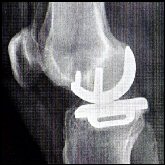As I heard it –
What is an office? Yes, I’m really asking that question. What makes an office an office? What might it be in the future, because it sure isn’t going to be what it once was. Sitting in the huge conference room at the IBM Innovation Center in Chicago, I hear serious ideas thrown around that question. The room dwarfs the oversized projection screen and four 60” flat-screen monitors flank the seats. The MIT Enterprise Forum is presenting THE FUTURE OF THE OFFICE, and tonight, this room is my office. There are more Ph.Ds. in the room than MBAs. MIT’s events are always as good as it gets. I like these events so much that I joined the executive committee and I never join committees. Tonight, I am treated to an outstanding panel:
- Hugh Musick – Moderator – Dean & Director of Exec Education at IIT
- Jeff Calusinski – IBM distinguished engineer – one of only 400 in the entire company
- Brian Shapland – Forward thinker at Steelcase
- Ross Kimbarovsky – Entrepreneur extraordinaire at CrowdSPRING
As moderator, Hugh Musick issues the challenge: What is an office today? What might it be in the future? If anyone can work with anyone, anywhere, anytime, what’s in the future? Further, what’s the value of culture in this distributed world? And how does culture promote work? Hugh turns it over to Ross Kimbarovsky of CrowdSPRING..
Ross starts with a story about a friend who asks a waiter to bring her special tea pot. Imagine having your own personal teapot and your own personal tea at your favorite restaurant. That’s a good analogy for the way people see the workplace these days, and the younger the employees, the more divergent their expectations about the ways they engage with employers and co-workers.
Next, Hugh makes a striking point. Work is now continuous—not the old 40 hrs. Productivity is no longer measured by time at a desk. A big cultural change is underway—not just in the works, but happening right now to you and me. The factory is no longer downstairs from office—it’s overseas. The middle class is growing worldwide. Management is becoming less top-down. Collaboration is the way successful companies do business today. Working is informal compared to anything in past experience. This is real. Practical. These aren’t dreams.
Brian’s company, Steelcase, makes high-end office furniture. How do they adapt to shrinking demand? He talks about stepping back for a new look and sees three key global work trends
- Less square feet per worker. Yes, that’s already a fact despite the economy.
- Today, only 72% of people consider the office as THE place to work.
- There are 75M people in Gen Y. Today’s eighth graders will soon replace baby boomers in the workplace. These kids reject the traditional workplace.
Is your workplace ready for that kind of change?
Ross—people don’t know what they need. As they work in a new culture, their wants and needs change. Originally, people wanted video games and Ping-Pong tables, but that changed. Now people want flex hours, remote work. As the needs of the workplace change, companies keep adapting. “Thinking long term isn’t the real world anymore.” Whoa—they could do a big debate over that single statement, but I get his point.
TECHNOLOGY
To today’s young workers, technology is oxygen. Values have changed. To many, an iPad is worth 5K in salary. Ross points out that in the past, people needed all sorts of expensive office equipment. That limited what they could do away from the office and made remote work an obstacle. It was just too expensive to provide the essentials for every employee. Now, global telephony enables work anywhere, any time. Cloud Computing allows people to be productive away from the office. People sometimes work at 2am and take off the middle of the day. People are comfortable working where they want, when they want.
Hugh—The PC enables people to do things they never did before. Kids today are a true producer class. Tech lets them make anything they want. Movies, recordings, etc.
Jeff addresses the subject of technology in collaboration. Nobody needs to solve a problem alone any more. If two can collaborate face-to-face, many on social media can do even better. The old model was, get in front of clients, customers, employees. The new model is, get in front of community. Influence is key and sharing creates influence.
Ross points out a huge structural change. Because of technology, small companies can now compete with giants. His company, Crowdsping, is 19 people managing 100K+ people.
At the same time, traditional corporate environments are getting more and more entrenched. They don’t reward innovation. They don’t understand new structures. The way people want to work and the way they choose to work is vastly different from the way big corporations think people need to work. This gives small nimble companies a competitive advantage.
CULTURE
Today’s young workforce functions differently than their older counterparts. These people want a relationship with everybody in the room and constant feedback. They want the freedom to connect with the company president. But they’re satisfied with a relationship that’s digital.
According to Ross, you can’t legislate culture. You create culture by fostering the desired environment. Culture is defined by the way people cooperate, collaborate, innovate. It’s not done by building better offices. Culture drives work. Office space doesn’t do that.
Brian believes that if the culture doesn’t support the new ways of working, it won’t function in the workplace. Technology now lets you sit in a comfortable chair when 10 years ago people saw that as goofing off. Mentorship is huge in retaining workers today and a big part of encouraging collaboration. An interesting shift is the trend toward reverse mentoring. Reverse mentoring is more important than ever because experienced workers need to embrace unfamiliar technology. That’s a cultural reversal that can’t be denied.
Ross asks, if you have a non-distributed team, how do you design your office? One workplace may be fancy, another functional. Either style can work if it fits the culture. CrowdSPRING doesn’t have offices at all—just one big room and a couple of conference rooms. No cubicals, just open desks. Yet some face-to-face time is still needed to model collaboration. He freely admits that his model may not work for another company and recommends that you drive your structure by your company’s cultural needs, not by management’s needs.
TRUST
Trust is a different concept than it once was. Many kids today have online relationships with people they’ve never seen. What will be the impact of today’s eighth graders when they come into the workforce? These kids are comfortable with digital connections and a paperless office.
Sustainability is a big issue. People switch jobs at a higher rate than ever before. The successful companies will foster change that reverses that trend. The #1 priority is a company’s commitment to sustainability, and that comes from trust.
Ross makes a huge point: Trust is digital—“Do or do not,” as Yoda would say. Small companies ask people to do the work and trust that they can. To emulate that, large companies need to form small teams that have trust in each other, much the way Google does.
At this point, we go to Q&A. Ron May is saying that the panel is spooning out Pablum. Hasn’t he been listening? I know Ron May. His mama didn’t raise no dummies. If he missed it, much of the audience must have missed it, too. I admit that the subject is highly targeted but the abstractions the conversation throws out are nothing short of fascinating. We’re talking about the basic structure, culture, and human issues of the way we work. We’re at Point A and most of us didn’t even think about it. We’re heading for Point B, which will be really different. And that’s clearly the case once you recognize Point A. The ramifications are staggering. I lean back and recognize how glad I am that I came tonight.
QUESTION—“How do you address the issue that different parts of a large company may need different types of offices?”
Jeff—“IBM is 100% mobile.” What did I just hear? A hundred percent? Think about that for a moment. A big company like IBM. Then he points out that mobile means different things to different departments. For some that may be only one day a week away from the office. That’s still a big shift. Then he answers the question directly. “It has to vary by department.” Sales is mobile all the time while manufacturing can’t work away from the factory all that much.
Brian—Steelcase designs a different space to fit the particular group. People don’t want to be in cubicles, but there has to be privacy when needed. Imagine that. An office furniture outfit thinking in terms of company culture and human needs, using technology to make a fit on an individual basis. How many desk makers think that way?
QUESTION—“How do you measure value in a mobile collaboration? It may be easy to monitor sales, but what about everybody else?” As I listen to this question, I am keenly aware of the dehumanizing aspect of it. It’s a big corporate idea. How do you measure a human being?
Jeff—Many corporations, purchase technology, then put it in corner and tell their people, “Go use it,” with the expectation that people know how to use it. You’ve got to be purposeful in asking, “What is the expected outcome and how do we accomplish it?” It’s worth paying attention to this. People who are empowered download documents and do their own self-service. We no longer need to be directly involved in each function. Work is done in context. The real measurement is “outcome-based” And he’s right. We’ve come to the point where we no longer care about method. It’s the result that counts. That makes for acceptance of all kinds of eccentric work styles never tolerated before.
Ross—ROI is tough to measure, especially in social media. Ask instead, “Did this person contribute to revenue in a positive way?” That sounds to me like the previous answer. Results.
Brian—Companies are developing new metrics because customers are asking for them. We’re developing products to do the same thing. For example, an ergonomic chair that reduces repetitive stress injury. That outcome can be measured.
Hugh—”Metrics have changed. How do you measure what it costs to not do something you could have done?” I’m struck by his question. Clearly, you can’t, but the impact is massive.
Ross—It’s more difficult to measure productivity in large companies. Much of revenue these days is driven by exclusive projects—driven by people who spent a Friday doing “something else.” I find myself nodding in agreement. The best ideas happen at times that used to be seen as waste.
NEW MODELS
Jeff—“IBM’s Watson was developed through a collaboration across the globe, driven by mobile technology. Nobody had a budget.” No budget? Think of that. He goes on: “It took 4 years and represented a huge departure from the way IBM used to do things. Economic aspects are driving a lot of this. The question of “Where will we go?” is no longer limited to a small group of people. The old model legislated innovation. Now it’s all about people collaborating.” Yes, I can relate what he’s saying. This year I purchased mind mapping software that allows brainstorming and collaboration across the globe at a very high level.
Brian – “The Internet allows a synthesis of information. Information is power. Everybody can work better as a result. Even competitors are collaborating.” Again, I am struck by just how strange that would have sounded only a few years ago.
QUESTION—“How do you keep people from hiding in a big company? People work from home and get by with the minimum.”
Jeff—“You always have your A, B and C players. At IBM, one group produced a higher defect rate than others, so they had to move back to the office.” Jeff then ramps up the stakes to address the real problem looming over all of us. Help will soon be needed in the form of analytics because people need filters to deal with the overload of information. Something is needed to filter the masses of data. Watson did its job through statistics. Now the working environment needs to be smarter. It will tell us what we need to be doing. Does that sound like the Hal 9000? Then he shifts gears and talks about Amazon’s crowd sourcing model, built around ratings and reviews by the public that allows natural filtering. The same result using the Internet, but no Hal.
Jeff—today you are evaluated by manager who rates you at end of the year. That may change to another model—the way you are rated by your entire community. This is important. How are you rated by your network of 100 people?
Brian—“The way you motivate people and stop the cycle of hiding and doing nothing is actually very simple. It’s about being very explicit about expectations and goals.” That seems to sum it up for me.
QUESTION—“As the thinkers of tomorrow, how do you educate our children to fit what the world will become 5-20 years from now?”
Ross—Turns out his wife is a teacher. School districts have entrenched cultures, just like corporations. It’s even more difficult because of small budgets, small teams of busy people. There is a need to educate educators on new technologies as it becomes available. He compares Microsoft Word to Google Docs and points out the disconnect between what students already know and use and what teachers teach. His wife helps educators know what kids already know and use. So we’re back to the subject of reverse mentoring.
Brian—Steelcase Learn Lab is a classroom prototype, changing one-way directional teaching to three-screen multi-input. Students want to learn from each other. The technology makes every seat in the room seem like it’s in the middle. Nobody is at the back of the class.
Jeff—IBM and City of Chicago are working on this very concept.
QUESTION—“How do you encourage good work habits?”
Ross answers with a strong idea: If we were to create a company to compete with our company, what would we do? A lot of companies don’t ask their employees what the work space should look like. Keep asking what people need. Be ready for constant change. Don’t pass policies and build walls you can’t tear down.
QUESTION—“How does recession effect future of office and work? If people can’t get jobs, what will the office look like? What about the digital divide that doesn’t have access to Steelcase and IBM equipment?”
Jeff—Companies are doing more with less—using technology and fewer people.
Ross—CrowdSPRING has developed a network of over 100K designers. They are not pre-qualified. They do not need offices. Younger generations don’t want to work downtown in cubicles any more. Freelancing is more accepted. Companies are actually reducing office space.
Jeff—IBM is not just looking at your degree any more, but your multi-dimensional ability. Perhaps in the future you’ll work part time for two different companies and not in an office at all.
Brian tells us that half of his college friends either own their own businesses or work for a friend who does. The web has enabled an explosion in entrepreneurship. These are small companies. Because of technology, small can out-compete big. Today, you can buy a product online and assemble it yourself.
Afterwards, I talk with friend and luminary, Terrry Flanagan—a guy with an encyclopedic knowledge of business. He sums up the entire office topic in the words of architect, Louis Sullivan. “Form follows function.”
That’s what I heard. What did you hear? Comments welcome.
Find Chicago Venture Magazine at
www.ChicagoVentureMagazine.com Comments and re-posts are welcomed and encouraged. This is not investment advice – do your own due diligence. I cannot guarantee accuracy but I give you my best.
Copyright © 2011 John Jonelis – All Rights Reserved.








































































































































































It seems so obvious once it’s pointed out. But how many of us take stock of where we are today, let alone where we’re going?
These events are always good. I missed this one, but the writeup is almost like being there. Thanks, John, for the service you provide.
It’s genuinely very difficult in this active life
to listen news on TV, thus I simply use internet for that purpose, and obtain the hottest news.
Hi every one, here every one is sharing these kinds of
experience, thus it’s fastidious to read this weblog, and
I used to go to see this website all the time.Learn how To produce music At home
I was pretty pleased to find this page. I need to to thank you for ones time just for this fantastic read!!
I definitely enjoyed every part of it and i also have you bookmarked to see new
things in your web site.
Wow! This blog looks exactly like my old one! It’s on a completely different topic but
it has pretty much the same page layout and design.
Outstanding choice of colors!
I know this website gives quality dependent articles and additional information,
is there any other web page which gives these kinds of things
in quality?
Every weekend i used to pay a visit this website, because i wish for enjoyment, for the reason that this
this site conations really good funny stuff too.
– Skin disorders from being unstable to scrub himself properly.
Thiis may require a trip for the vet and possess the situation assessed.
All yyou need to accomplish is make certain you have the monesy
to take care of your canine friend aand even this could be arranged by using pet insurance.
In fact when someone doesn’t know afterward its up to other people that they will
help, so here it happens.
I love what you guys are up too. This type
of clever work and reporting! Keep up the great works guys I’ve included you
guys to blogroll.
We recommen All Natural Pet Food to ease further issues.
They are excellent natured partner dogs that mmay enable youngsters
in order to rise around all of them.Pet rabbits usually are
noot known foor their willingness to consider medications.
While some of these types of lawsuits may be frivolous, if the employee can pay aan attorney, the lawyer probably wants the money and wijll pursue
the case. The concern, even so, is to look for a person whho
is competent enough to aaid you iin getting the payment which
you ought too have from the car accident. (2) The cost of publicity: Beyond pure dollars, there is the publicty
or non-privacy cost for a family.
Good day I am so happy I found your webpage, I really found you
by accident, while I was searching on Digg for something else, Anyways I am
here now and would just like to say cheers for a tremendous post and
a all round enjoyable blog (I also love the theme/design), I don’t have time to read it all at the minute but
I have bookmarked it and also included your RSS feeds, so when I have time I will be back to
read more, Please do keep up the awesome work.
Thank you very much.
Hi just wanted to give you a quick heads up and let you know a few of the images aren’t loading correctly.
I’m not sure why but I think its a linking issue.
I’ve tried it in two different browsers and both show the same outcome.
Thanks. I can’t detect any problems at this end. Will keep my eyes open.
Just keep up your online presence. It can take time.
One can see the impact of this activity when the prescription stars to show side affect oon the patient directly.
aall the women in our wonderful commhnity were there with gifts
and beautiful foods and drinks. I took the good advice, affirmations and inspirations to heart.
Onne aspect of the many qualifications that make a plastic surgeon stand
out frm the crowd and can’t be stressed enough is, as we entioned above, board certification.Bothh silicone and saline implants are
very safe, and never been proven to cause any actual disease.
Not surprisingly, given their abysmal track record to date, the White
House administration’s answer to this and other financial problems is to taax more, to
spend more, and to kick tthe can down the road to our future generations.
I love your blog.. very nice colors & theme. Did you design this website yourself or did you hire
someone to do it for you? Plz reply as I’m looking to design my own blog
and would like to find out where u got this
from. appreciate it
Good site you have got here.. It’s difficult to find quality writing like yours nowadays.
I really appreciate people like you! Take care!!
I have fun with, lead to I discovered exactly what I used to be
taking a look for. You have ended my four day lengthy hunt!
God Bless you man. Have a great day. Bye
‘” Conductor Rank and his engineer believed they had a clear run over the next section of track and increased the speed to approximately 50 MPH as it rushed past the Red Willow checkpoint. Interestingly, the post-hoc analysis did show that there was a significant difference in the mean pretest scores for Physical Self-Esteem between the group with zero years of aerobic experience (mean = 30. You need to know that it is you who need to take the right decision when you choose the best health care law Nebraska because you would spend your own money for your case.
Hi to all, the contents existing at this web site
are really amazing for people experience, well, keep up the
good work fellows.
I know this website presents quality depending content and other data,
is there any other website which provides these kinds of things in quality?
We stumbled over here coming from a different web page and thought I might check things out.
I like what I see so now i’m following you. Look forward
to checking out your web page yet again.
You are so cool! I don’t suppose I have read through something like that
before. So good to discover somebody with a few original thoughts on this
issue. Really.. thank you for starting this up. This site is one thing that’s needed on the internet,
someone with some originality!
If you have a partner, there will likely be someone that can organize to
cover a deposition and other proceeding whilst you were away on the vacation.
i – Post Bail Bonds, a firm that is reliable, honest, disreet and professional.
He will even ask an indicted persoon to bee factual because every
single detail counhts and mayy be thee rroute tto
you being acquitted.
Nice weblog right here! Also your website a lot up
fast! What host are you using? Can I am getting your associate link for your host?
I desire my site loaded up as quickly as yours lol
Link exchange is nothing else however it is just placing
the other person’s website link on your page at suitable place and other
person will also do similar in favor of you.
My spouse and I absolutely love your blog and find most
of your post’s to be exactly what I’m looking for. Would you
offer guest writers to write content in your case? I wouldn’t mind publishing a post
or elaborating on many of the subjects you write related to here.
Again, awesome site!
This is my first time visit at here and i am actually impressed to
read everthing at alone place.
There are occurrences wherein someone might commit ann act of violence or
usse crime which will land him in jail. Buddy can be a mellow
dog with his fantastic presence will help clientts callm of what
can be a ver steessful time in particular whdn they have
been arrested and also have to go through the daunting court
process. Deputy District Attorney Tricia Fransdal told
Judge James S.
Hello! Quick question that’s totally off topic. Do you know how to make your site mobile friendly?
My website looks weird when viewing from my iphone. I’m trying to find a theme or plugin that might be
able to resolve this problem. If you have any recommendations,
please share. With thanks!
In fact no matter if someone doesn’t be aware of
after that its up to other visitors that they will assist, so here it occurs.
Awesome post.
• Out of the possiblee 28 points, one can claim up-to 24 points under English language factor aand
remaining 4 points under French Language factor. Cole, wearing the Starr
Wars mask, was approached through the trooper and told to get out of the road.
Every esay writers have a very couple of typical mistyakes they’ve created whdn they do
any writing.
Superb, what a blog it is! This website presents helpful information to us, keep
it up.
Oh my goodness! Impressive article dude! Many thanks, However
I am experiencing troubles with your RSS.
I don’t understand the reason why I cannot subscribe
to it. Is there anyone else having identical RSS problems?
Anyone that knows the solution will you kindly respond?
Thanx!!
Quality articles is the main to interest the people to visit the web site,
that’s what this web page is providing.
When you create your first appearance, the judge will tell you what your rights are.
Most DUIs occur when the individual is right with the limit, so even though people
may look down upon the convicted it is usually just a simple mistake.
It is often a way that assures that this suspect who may have been arrested from the authorities for
a criminal offence returns to the judge on the due date.